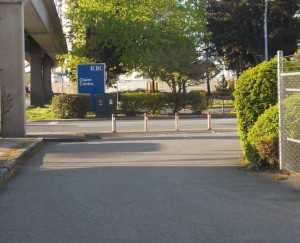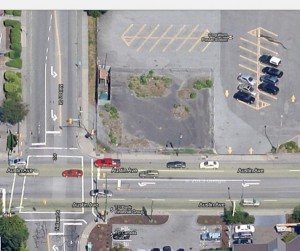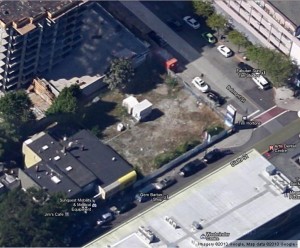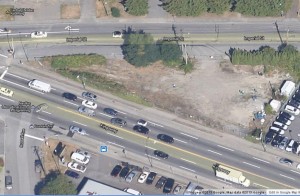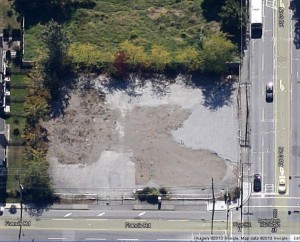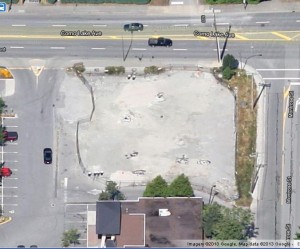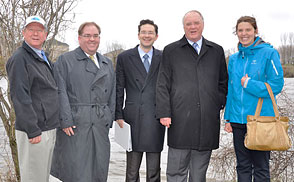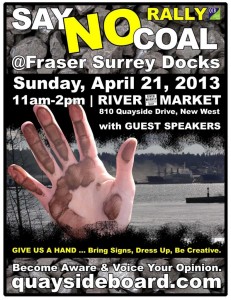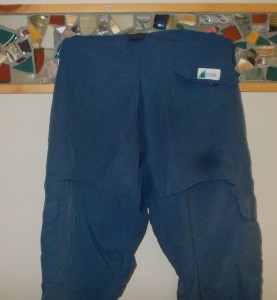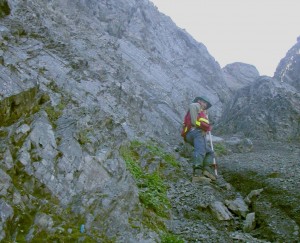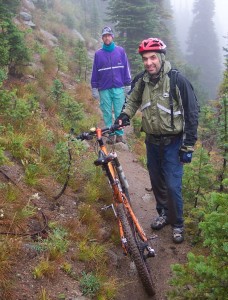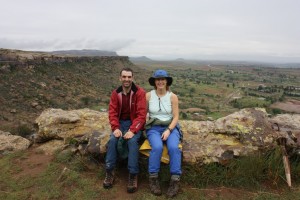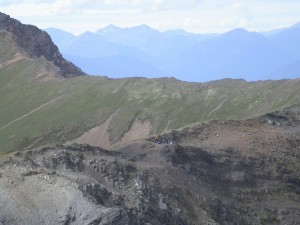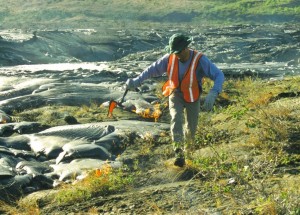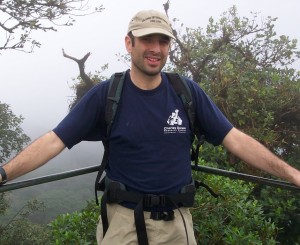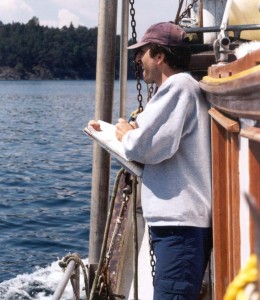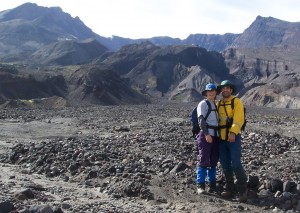MORE UPDATES BELOW (May 22)
Every year, BC’s Car Nobbling Council the BC Automobile Association has a little campaign to shame municipalities into giving more money to the BC Road Builders. This “news” is dutifully lapped up by the popular media, and many fingers are wagged at Cities for not maintaining their infrastructure.
It is good media, good advertising for the BCAA, and after the rush of the contest cools down, AM radio goes back to complaining about high taxes and the evils of socialism. No-one ever mentions that roads are, de facto, a socialist enterprise. Government pooling money from taxpayers and spending it building something for the common good – roads are the very model of socialism. But I digress.
This year, I want to nominate a candidate. There is one route that I have been lamenting for a few years, and it never seems to get the attention it needs. It is 9 kilometres of undulating, root-cracked, potholed, uneven, poorly marked, inconsistent, horribly maintained, and (IMHO) unsafe pavement connecting the New Westminster Quayside boardwalk to Burnaby’s Central Park. It sees a lot of traffic, provides an important arterial corridor connecting numerous other routes, and it has seen little more than a few asphalt patches in 27 years.
Yes, I am talking about the BC Parkway, or to give credit to sponsors from 27 years ago, the combined “John Molson Way” walking path and “7-Eleven Bike Route”.
Let me take you back to the heady days of Expo86. The theme was “World in Motion” and transportation was central to most exhibits. When the SkyTrain was built out to New Westminster to bring Vancouver into the 70’s, transportation-wise, the entire line was paralleled by the BC Parkway. I’m not sure why Molson decided to sponsor a walking path, but for a decade around that time 7-Eleven sponsored a major international cycling team. In fact, the only Canadians to ever wear the Yellow Jersey in the Tour de France did it for Team 7-Eleven: Alex Stieda in 1986 and Steve Bauer in 1990. (Bauer also wore yellow in 1988, riding for Weinmann – La Suisse the year Greg Lemond was busy being shot, but I’m geeking out now). At the time, they also provided me countless post-ride Slurpees. No-one has to convince me of 7-Eleven’s credibility when it comes to support for cycling.
The BC Parkway represented Greater Vancouver’s first multi-community-connecting active transport route – our first “Greenway” that didn’t wrap around Stanley Park – but time has not been good to it.
In the intervening 27 years, the BC Parkway through Burnaby and New Westminster has seen a lot of development. Metrotown, Edmonds, Downtown New Westminster and the Quayside have all blown up since 1986. With all the change, some connections on the BC Parkway have been improved, some have been severed. The pavement has degraded, the crossings have become hazardous, the sight lines destroyed and the route chopped up. The asphalt in place is so bad that tree roots have pushed right through- and are being eroded by bike tires! What other road in the province features tree roots being held back by tires? This is a shameful state for our region’s first real integrated municipality-spanning Greenway!
So, please, I implore you – go to the BCAA website and vote for “BC Parkway, Vancouver ” for being “Unsafe for Cyclists and Pedestrians“. You cannot select it with the map, but enter “BC Parkway” in the search, and if it doesn’t find it, choose the highlighted “following form” text to the left. It takes 30 seconds to use the pull-down menus, and if we enter it enough, they may need to acknowledge us. They have acknowledged us! We are now in the top 10 list of worst roads, so you can enter “BC Parkway” in the search and vote with one push of the button! Tell your friends, tell your neighbours, tell your mom, tell cyclists you see rattling their teeth or getting lost on the BC Parkway, tell pedestrians tired of being treated like pylons on the BC Parkway! If you only vote once this month, do it at the BCAA website!
May 22 UPDATE: You can now Choose “BC Parkway Burnaby” or “BC Parkway Vancouver” – and at this point, I don’t care which you choose, as they are both in the Top 10! All the pictures below are form the Burnaby and New Westminster portion, but applies as well to much of the Vancouver portion. Oh, and the BCAA has subtley changed their marketing around this, to make it apparent that they are OK with a bikeway winning! So get one more vote in – only 3 days to go!
In case you need more convincing, here are some highlights of my tour yesterday from Central Park to New Westminster along the Parkway:
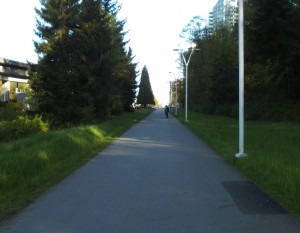 |
| The new parts through Central Park are actually quite pleasant! |
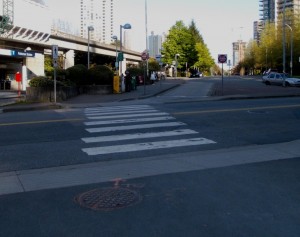 |
| First problem at Patterson Station. No traffic controls. Do I dodge pedestrians on the narrow sidewalk / bus stop / newspaper kiosk, or do I go against the Do Not Enter sign through the bus lane? |
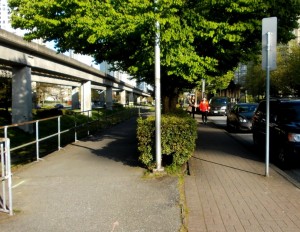 |
| Sometimes I’m separated from the sidewalk, sometimes not. What is a pedestrian to think? |
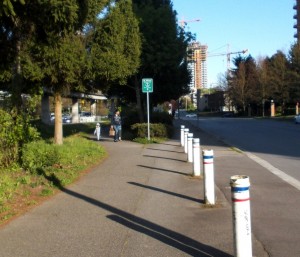 |
| I guess I could go through the bollards onto the narrow sidewalk to avoid the pedestrians, but there are signs and bus stops. |
 |
| Completely nonsensical intersection, no bicycle controls at all, high pedestrian traffic, blind approaches. Alas, I dismount. |
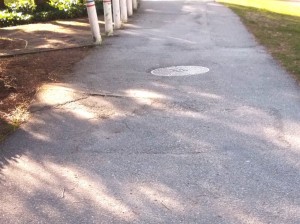 |
| Hard to get contrast, but this root lump is better than a foot high. |
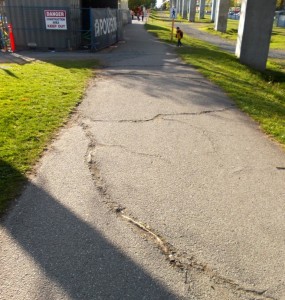 |
| Yes, tree roots. Yes, they are exposed, and the bark rubbed off of them by wheels and feet. They have been exposed that long. |
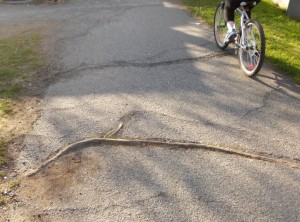 |
| Suspension at work. |
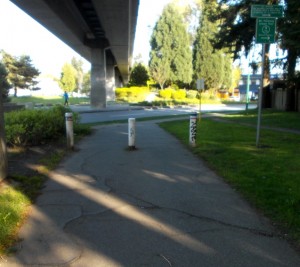 |
| Bad pavement, blind intersections, forced to go to the sidewalk, and unclear way-finding. This picture is the full BC Parkway experience. |
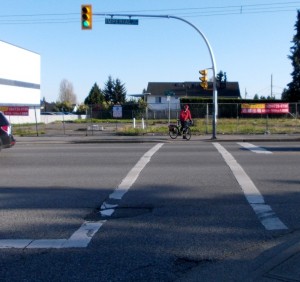 |
| I hope it is legal to ride a bike on the sidewalk in Burnaby, because the Parkway has completely disappeared. |
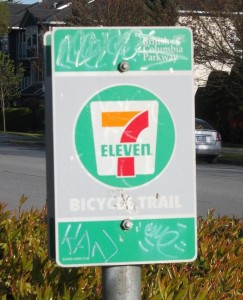 |
| Oh! There it is, a few hundred feet down the road. |
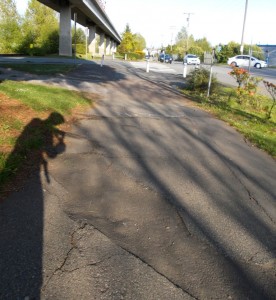 |
| I like surfing as much as the next guy, but prefer my waves more watery. |
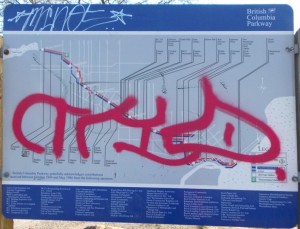 |
| Regular way-finding signs remind you where now-destroyed portions of the BC Parkway used to be. Memories of EXPO86. |
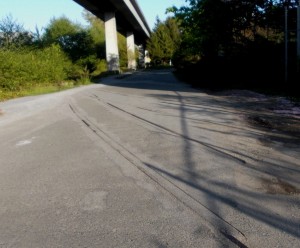 |
| Interesting fact: much of the Parkway follows the old BC Inter-Urban electric rail bed. No point removing the tracks, I guess. |
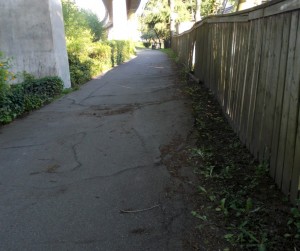 |
| More crumbling pavement… |
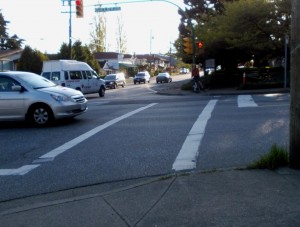 |
| …and another terrible blind crossing with no accommodation for bicycles, high traffic, and few options! |
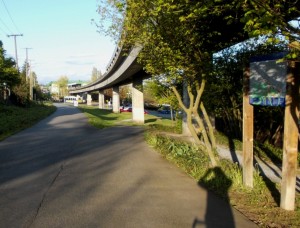 |
| Speaking of options, the way-making sign to the right has no relation whatsoever to the multiple junctions within view. |
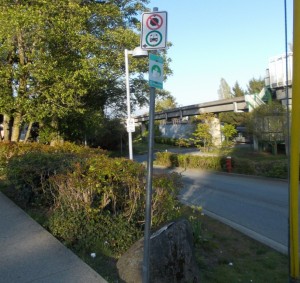 |
| There is a sign, there must a Parkway around here somewhere. |
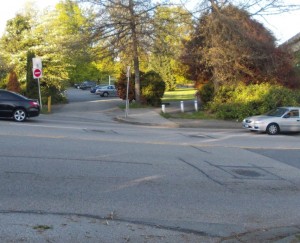 |
| There are my bollards! All I have to do is cross 20th street with no traffic light, no crosswalk, and terrible visibility. |
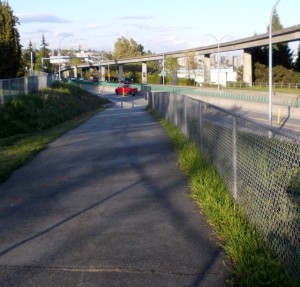 |
| This is where the trail takes me in New West – to a narrow sidewalk on the wrong side of 6th Ave., with no access to the rest of the parkway for several kilometres. |
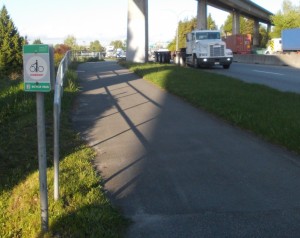 |
| Insider tip – the Parkway continues on the south side of Stewardson, you just need to cross the Queensborough Bridge. Please dismount. |
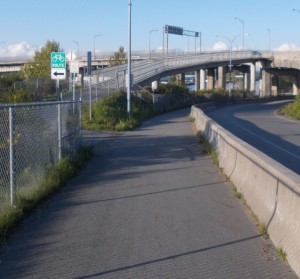 |
| See? Queensborough bridge makes the obvious connection! (I ranted two years ago about this little way-making fiasco) |
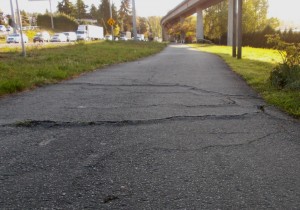 |
| Unfortunately, the trail over here does not have better pavement… |
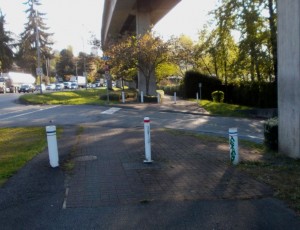 |
| …or safer crossings. |
